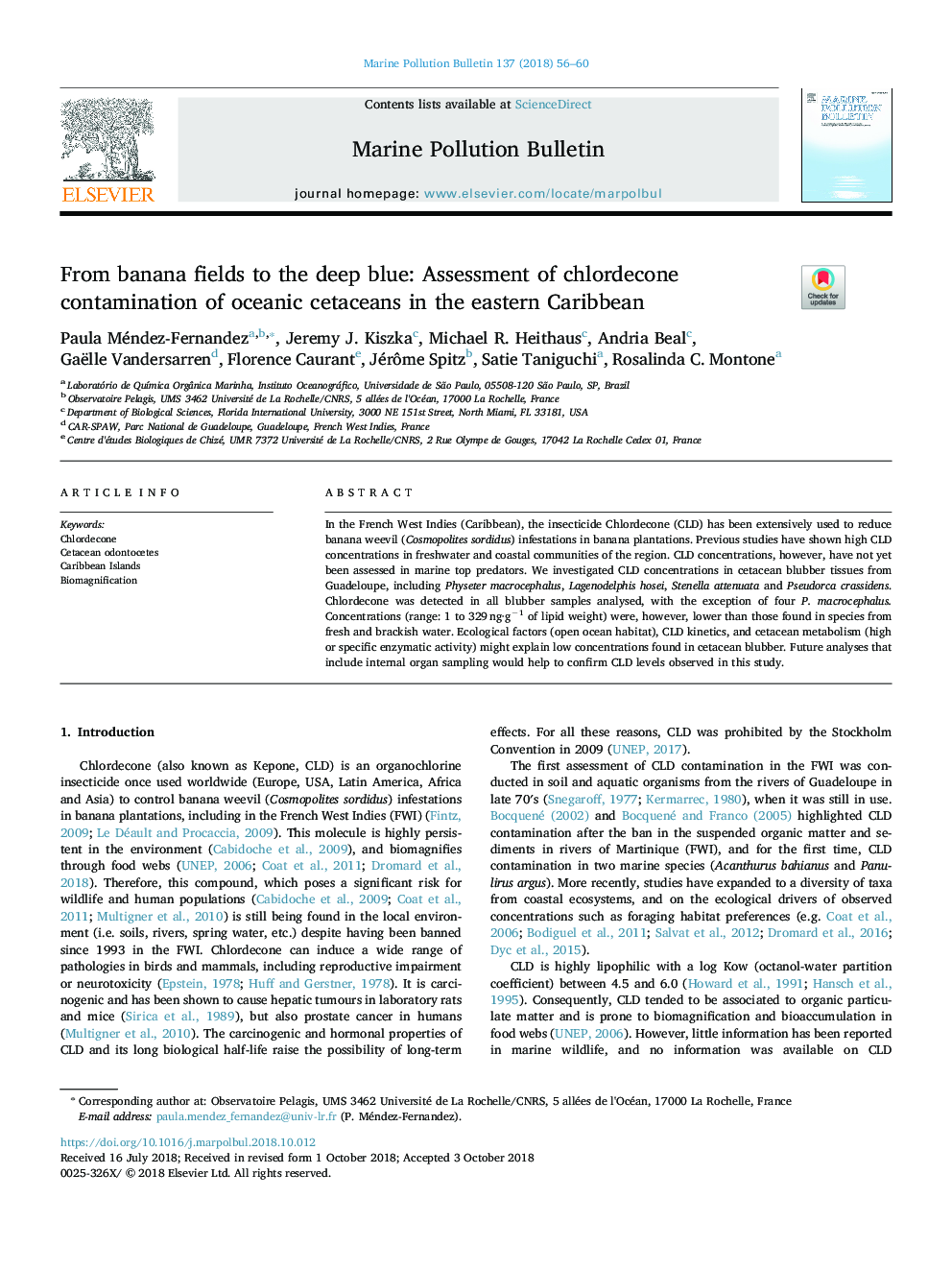| Article ID | Journal | Published Year | Pages | File Type |
|---|---|---|---|---|
| 11013043 | Marine Pollution Bulletin | 2018 | 5 Pages |
Abstract
In the French West Indies (Caribbean), the insecticide Chlordecone (CLD) has been extensively used to reduce banana weevil (Cosmopolites sordidus) infestations in banana plantations. Previous studies have shown high CLD concentrations in freshwater and coastal communities of the region. CLD concentrations, however, have not yet been assessed in marine top predators. We investigated CLD concentrations in cetacean blubber tissues from Guadeloupe, including Physeter macrocephalus, Lagenodelphis hosei, Stenella attenuata and Pseudorca crassidens. Chlordecone was detected in all blubber samples analysed, with the exception of four P. macrocephalus. Concentrations (range: 1 to 329â¯ng·gâ1 of lipid weight) were, however, lower than those found in species from fresh and brackish water. Ecological factors (open ocean habitat), CLD kinetics, and cetacean metabolism (high or specific enzymatic activity) might explain low concentrations found in cetacean blubber. Future analyses that include internal organ sampling would help to confirm CLD levels observed in this study.
Related Topics
Physical Sciences and Engineering
Earth and Planetary Sciences
Oceanography
Authors
Paula Méndez-Fernandez, Jeremy J. Kiszka, Michael R. Heithaus, Andria Beal, Gaëlle Vandersarren, Florence Caurant, Jérôme Spitz, Satie Taniguchi, Rosalinda C. Montone,
